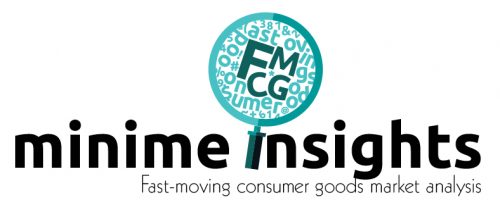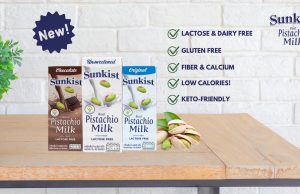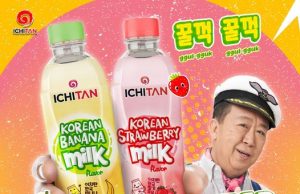
- 1 in 3 Malaysians, aged 60 years and above, have low muscle mass[i]
- The collaboration aims to raise awareness of the importance of muscle health, regular muscle mass screening, good nutrition and exercise
- Abbott’s new Ensure® Gold StrengthPro with HMB and YBG enhances muscle and immunity to support older adults’ overall health
KUALA LUMPUR, Malaysia, 7 March 2024 – Malaysia’s ageing population is increasing rapidly—it’s predicted that by 2040, approximately 15% of the population will be 65 years old and above.[i] Yet, age-related muscle loss is a prominent issue that is preventing healthy ageing. Currently 1 in 3 adults aged 60+ have low muscle mass, which can impact their overall strength and health.
Abbott, the global healthcare company, today announced a collaboration with the Malaysian Healthy Ageing Society (MHAS) to raise awareness of the importance of muscle to support older adults and help build a healthy ageing community in Malaysia. The Abbott and MHAS initiative aims to get Malaysian adults to pay attention to their muscle health to help avoid age-related muscle loss, which greatly increases the risk of disability. As part of the initiative, Abbott and MHAS will conduct a series of educational activities on muscle health and muscle screening.
Low Muscle Mass in Adults Is a Growing Concern
As people age, muscle mass decreases gradually. Starting at age 40, adults can lose up to 8% of their muscle mass per decade, and after 70 that rate almost doubles.[ii] Sarcopenia—or age-related muscle loss and function—can significantly impact mobility and strength, increase frailty and hospital length of stay, and decrease immunity. In fact, research suggests that low muscle mass is associated with compromised immunity, increased inflammation and susceptibility to infections.[iii] [iv]
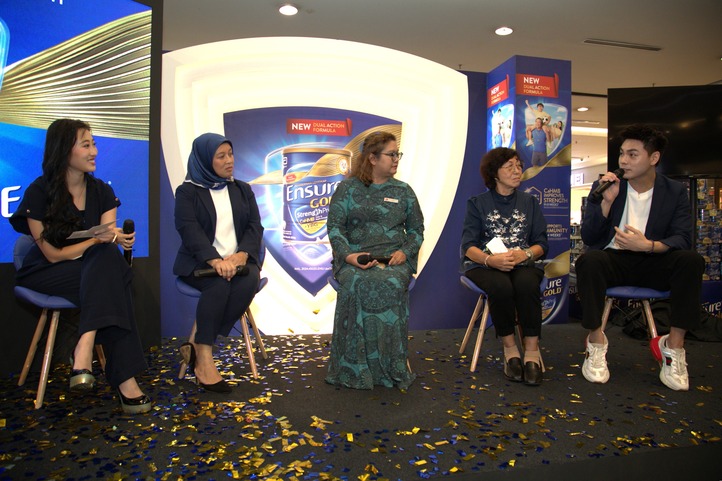
“If adults don’t take preventive measures, age-related muscle loss can cause overall health issues and difficulty for adults to perform daily activities,1” said Professor Dr. Shahrul Bahyah Kamaruzzaman, president of MHAS. ”It is our hope that, together with Abbott, we can support ageing Malaysians by empowering adults to screen for muscle loss and take ownership of their health—starting with their diet and making efforts to stay more active.”
Many adults don’t recognise the signs of muscle loss, which can include low energy, slower walking speed, decreased strength or fatigue. To help adults better understand their muscle health, Abbott is organising a muscle health awareness roadshow—which includes the #Stand4Strength challenge—across Malaysia from April through October. All Malaysian adults are invited to participate in the #Stand4Strength challenge at an event or online. The challenge encourages individuals to undertake a simple, scientifically validated sit-to-stand exercise and insert their results into the online Muscle Age Calculator to ascertain their muscle age. Additionally, MHAS will host the ASEAN Conference on Healthy Ageing in Penang in August to educate healthcare professionals and the public on how to address and prevent sarcopenia.

Muscle Loss Prevention Starts with Good Nutrition and Exercise
The good news is that with the right steps, adults can help prevent or slow muscle loss. While ageing is natural, muscle loss doesn’t have to be inevitable. Research shows that complete and balanced nutrition and physical activity can help reverse or slow down age-related physical weakness.6
“Simple changes like focusing on nutrient-rich foods, especially protein, is one of the most important factors to prevent muscle loss and promote healthy ageing,” said Dr. Nina Mazera Mohd Said, Abbott’s nutrition medical director for Malaysia. ”For over a century, Abbott has developed science-based nutrition solutions to support the health and wellness of people around the world. Our breakthrough innovation—the new Ensure® Gold StrengthPro—can empower Malaysian adults by helping to enhance their strength and immunity for a better quality of life.”
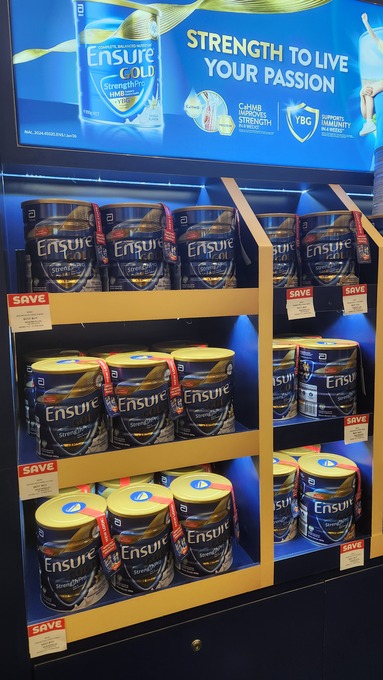
The new and improved Ensure® Gold StrengthPro is complete and balanced nutrition, designed with a dual action formula including HMB (beta-hydroxy-beta-methylbutyrate) to strengthen muscle health in 8 weeks [v] and YBG (yeast beta glucan) to enhance immunity in 4 weeks [vi]:
- HMB—Leucine is an essential amino acid and HMB is the metabolite of leucine and can be produced by the body. HMB can be found in small amounts in foods like avocado, grapefruit, cauliflower and catfish. However, it is difficult to get enough HMB to support muscle health through food sources alone, which is why it can be beneficial to look for nutritional supplements that include HMB.
- YBG—together with other nutrients—helps to strengthen the immune system. YBG is associated with improved markers of immunity, such as higher levels of circulating immune cells and increased antibody production that strengthens mucosal immunity to help protect against pathogen entry. Research has also shown that YBG can reduce symptomatic upper respiratory tract infections days and increase mucosal IgA.[vii]
Ensure® Gold StrengthPro also contains other important nutrients, including fructooligosaccharides (FOS) for better digestion, calcium and vitamin D for strong bones, and a plant-based fat blend with omega-3 to support heart health. Available in three flavors (vanilla, wheat and coffee), the new Ensure® Gold StrengthPro is widely available in retail stores, supermarkets, and e-commerce platforms in Malaysia.
For more information on the new Ensure® Gold StrengthPro, the Muscle Age Calculator or to be part of the #Stand4Strength challenge, visit https://www.family.abbott/my-en/ensure/tools-and-resources/tools/muscle-age-calculator.html.
[i] Ranee, R., Shahar, S., You, Y. X., Singh, D. K. A., & Sakian, N. I. M. (2023). Prevalence and Risk Factors of Sarcopenia Among Community Dwelling Older Adults in Klang Valley. 56(2), 164–171.
[ii] https://www.statista.com/statistics/713529/malaysia-aging-population/
[iii] Janssen I, Heymsfield SB, Wang ZM, Ross R. Skeletal muscle mass and distribution in 468 men and women aged 18-88 yr. Journal of applied physiology (Bethesda, Md.: 1985). 2000;89(1):81-88; Vandewoude MFJ, Alish CJ, Sauer AC, Hegazi RA. Malnutrition-sarcopenia syndrome: is this the future of nutrition screening and assessment for older adults? Journal of aging research. 2012;2012:651570; Newman AB, Lee JS, Visser M, et al. Weight change and the conservation of lean mass in old age: the Health, Aging and Body Composition Study. The American Journal of Clinical Nutrition. October 1, 2005 2005;82(4):872-878; Forbes GB. Longitudinal changes in adult fat-free mass: influence of body weight. The American Journal of Clinical Nutrition. December 1, 1999 1999;70(6):1025-1031; Grimby G, Danneskiold-Samsøe B, Hvid K, Saltin B. Morphology and enzymatic capacity in arm and leg muscles in 78-81 year old men and women. Acta physiologica Scandinavica. 1982;115(1):125-134.
[iv] Argiles JM, et al. J Am Med Dir Assoc. 2016;17:789-96,
[v] Prado, Carla M., et al. Annals of Medicine. 2018;50: 675-693.
[vi] Berton L et. al, plos ONE 2015, 10 (11); e0141757
[vii] BK McFarlin et al. Journal of Dietary Supplements 10 (3), 171 (2003)
